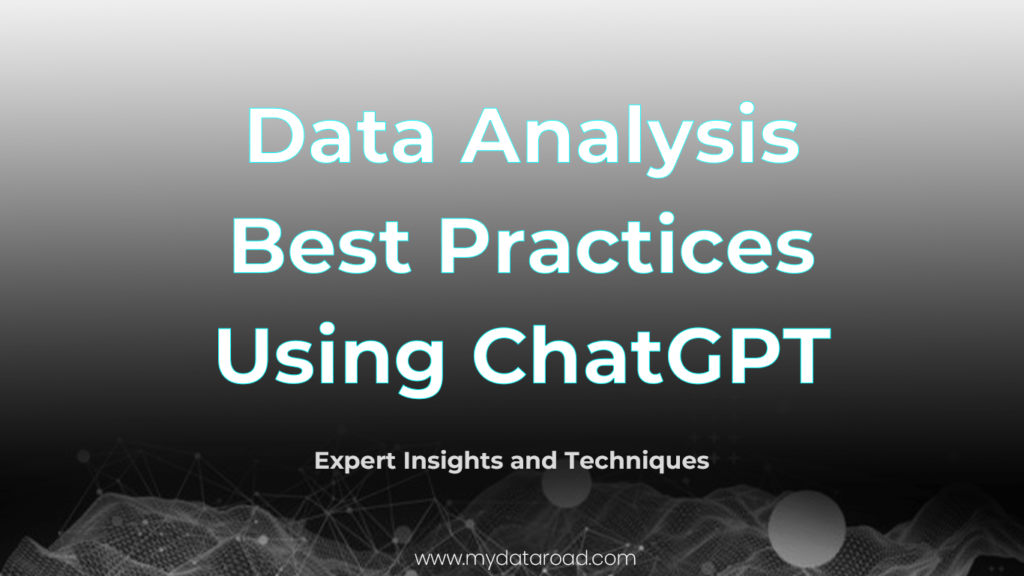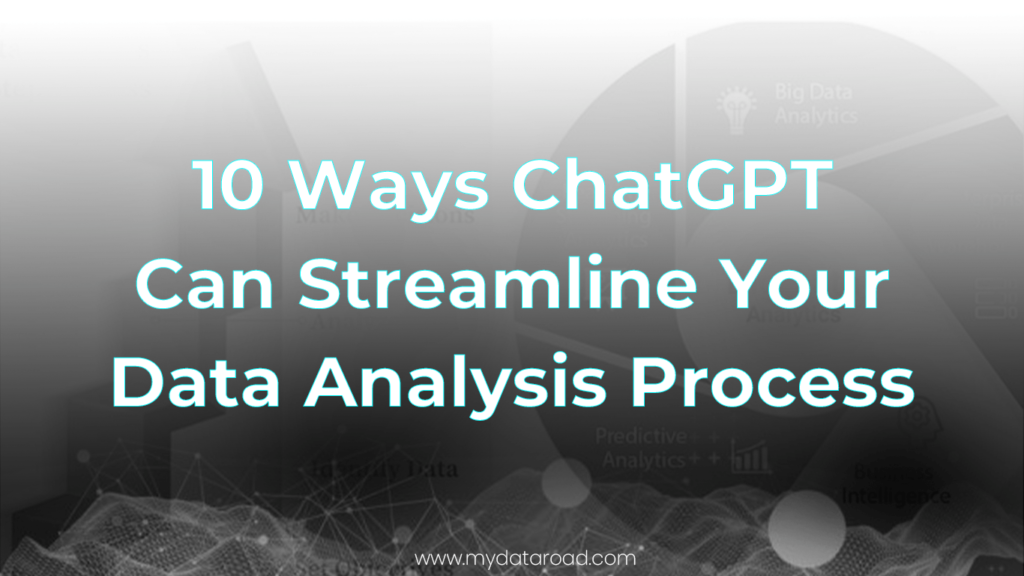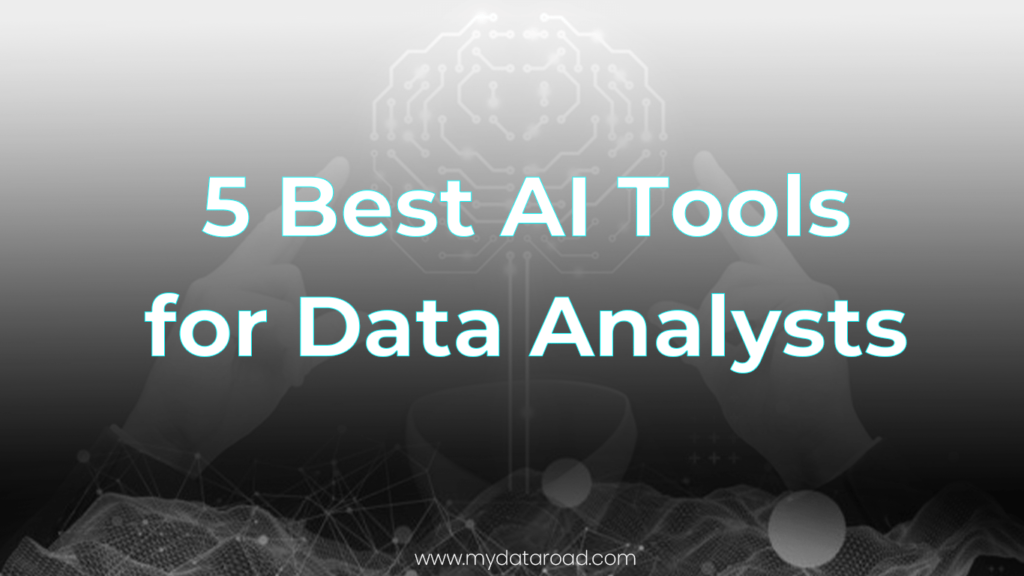Data Analysis Best Practices Using ChatGPT
Data analysis is an essential aspect of modern research and business, enabling the extraction of valuable insights from collected data. With the rapid advances in artificial intelligence and natural language processing, new tools like ChatGPT have emerged to assist data analysts in their work. Developed by OpenAI, ChatGPT is a state-of-the-art language model that can understand and generate human-like responses to a wide range of prompts.
Leveraging machine learning techniques, ChatGPT has demonstrated a strong potential for streamlining data analytics workflows and enhancing the overall efficiency and effectiveness of the process. By utilizing such AI-powered language models, analysts can significantly improve their understanding of complex data sets and drive more accurate, data-driven decisions.
Thus, incorporating ChatGPT into data analysis practices not only offers a cutting-edge approach to data analytics, but also fosters a new level of collaboration between humans and artificial intelligence. This powerful synergy helps analysts navigate the complexities of data-driven environments and opens doors to innovative solutions for research and industry applications.
Data Sources and Collection
In the realm of data analysis, selecting appropriate data sources and implementing efficient data collection methods are crucial. This section will discuss best practices for data sources, CSV files, API access, and data collection in the context of using ChatGPT for data analysis.
Firstly, it is essential to identify reliable and relevant data sources for the given analysis. Data can be obtained from various sources, such as government databases, company reports, or public APIs. Carefully evaluating the credibility and accuracy of these sources can ensure meaningful insights from the analysis.
CSV files are a common and convenient choice for working with structured, tabular data. They contain rows of data with comma-separated values and can be easily imported into ChatGPT or other data analysis platforms. Depending on the data, cleaning and preprocessing the CSV files may be necessary to remove inconsistencies or null values.
Another common method of obtaining data is through APIs. Web APIs enable automated access to structured data from external sources, providing a consistent and easy-to-query format for data collection. When using APIs for data collection, familiarize yourself with the specific API documentation, as it can dictate limitations on access, query parameters, and methods.
A key aspect of data collection is ensuring that it adheres to privacy and security standards. This may involve anonymizing data, removing personally identifiable information (PII), or following required industry regulations.
Here are some best practices for data sources and collection when working with ChatGPT:
- Select reliable sources: Ensure data relevance and credibility by selecting trustworthy data sources.
- Validate data: Conduct a preliminary check, and if necessary, clean and preprocess data, particularly CSV files, for inconsistencies or missing values.
- Adhere to API documentation: Familiarize yourself with the API’s access limitations, methods, and query parameters.
- Ensure privacy and security: Anonymize data when necessary, remove any PII, and adhere to industry standards and regulations.
Using these guidelines, data analysts can confidently and efficiently collect and prepare data for analysis with ChatGPT, leading to accurate and meaningful results.
Data Cleaning and Preprocessing
Data cleaning and preprocessing are essential steps in the data analysis process, particularly when working with ChatGPT. These steps involve identifying and correcting errors, inconsistencies, and inaccuracies in data to improve its overall quality and usefulness for analysis.
Handling Missing Values
Handling missing values is a critical aspect of data cleaning. There are several strategies at your disposal:
- Drop missing data: If the missing values constitute a small portion of the dataset, you may consider dropping the rows (or columns) that contain them.
- Impute missing values: Depending on the type of data, you can use various imputation methods, such as mean imputation (for numerical data) or mode imputation (for categorical data).
- Interpolate: For time series data, interpolation can be a suitable method to fill in missing values by estimating them based on the values of neighboring data points.
When using ChatGPT, handling missing values becomes essential, as the model’s performance heavily relies on the quality of the input data.
Text Data Processing
Text data is typically unstructured, which requires additional preprocessing steps before it can be effectively used for analysis with ChatGPT. Some crucial steps include:
- Tokenization: Break down text data into individual words or tokens.
- Stopwords removal: Remove commonly used words (e.g., “a”, “and”, “the”) that do not contribute significantly to the analysis.
- Stemming/lemmatization: Reduce words to their root forms to minimize data dimensionality and enhance comparability.
It’s essential to consider the specific languages used in the dataset, as text processing techniques may vary depending on the language. Additionally, you may use SQL to query and preprocess text data when the dataset is stored in a relational database.
By implementing proper data cleaning and preprocessing techniques, analysts can ensure they are using accurate and high-quality data in their projects involving ChatGPT, overcoming potential challenges and improving the overall performance of their analyses.
Exploratory Data Analysis
Exploratory Data Analysis (EDA) is a crucial step in the data analysis process, focusing on understanding the data structure and extracting insights. By employing techniques such as descriptive statistics and data visualization, EDA helps uncover patterns and trends in data that can drive better decision-making processes.
Understanding Descriptive Statistics
Descriptive statistics allow analysts to summarize and describe the central tendencies, dispersion, and distribution of their datasets. Some common measures used in this step include:
- Mean: The average value of the dataset.
- Median: The middle value of the dataset, separating the upper and lower halves.
- Mode: The most frequently occurring value in the dataset.
- Range: The difference between the maximum and minimum values.
- Variance and Standard Deviation: Measures of dispersion or spread in the dataset.
These measures provide a foundation for understanding the data’s general characteristics and identifying any areas that require further investigation.
Data Visualization Techniques
Visual representations of data play a vital role in EDA, making it easier to identify patterns, trends, and correlations within the data. Some popular data visualization techniques include:
- Histograms: Display the distribution of a continuous variable by dividing the data into bins and plotting the frequency of each bin.
- Box plots: Show the distribution of a variable through quartiles and help identify potential outliers.
- Scatter plots: Represent the relationship between two continuous variables by plotting points in a Cartesian plane.
- Heat maps: Utilize a color scale to represent the intensity or density of a variable in a matrix format.
- Bar plots: Compare categorical data by displaying the frequency or proportion of each category.
One popular library for creating these visualizations in Python is matplotlib, which offers a vast range of plotting functions and customization options.
In conclusion, EDA is an essential part of data analysis, involving descriptive statistics and data visualization techniques to uncover patterns and trends. By employing tools like matplotlib and adhering to best practices, analysts can extract valuable insights from their data, enabling better decision-making and driving success in data-driven projects.
Data Analysis Using ChatGPT
When working with data analysis, incorporating AI-driven tools like ChatGPT can streamline the process and boost productivity. This section provides an overview of how to leverage ChatGPT for data analysis tasks, with a focus on setting up the environment, crafting effective prompts, and extracting insights using Python.
Setting Up the Environment
To begin, ensure that you have the required packages installed in your Python environment, like pandas for data manipulation and OpenAI library for working with the ChatGPT API. You may also want to set up a virtual environment to keep your dependencies organized. The following Python packages are recommended:
- pandas: for data manipulation and analysis
- openai: for interacting with ChatGPT API
pip install pandas openai
Writing Prompts for Analysis
Crafting effective prompts is crucial for obtaining relevant and accurate insights from ChatGPT. When working with data analysis tasks, make sure to:
- Keep your prompts concise and specific.
- Provide any necessary context or background information.
- Include the desired analytical method, e.g., linear regression, decision trees, etc.
- Be clear about the expected format of the output.
For example, if you want to ask ChatGPT about calculating the correlation coefficient using a pandas DataFrame, an effective prompt could be:
Calculate the correlation coefficient between columns A and B in a pandas DataFrame named 'data'.
Extracting Insights with Python
Once you have crafted your prompts, you can now interact with the ChatGPT API to retrieve knowledge and insights. To achieve this using Python, integrate your prompts with the OpenAI library, and parse the results for further analysis. Here’s a simple example:
import openai
import pandas as pd
openai.api_key = "your_api_key"
def get_chatgpt_response(prompt):
response = openai.Completion.create(
engine="text-davinci-002",
prompt=prompt,
max_tokens=100,
n=1,
stop=None,
temperature=0.5,
)
return response.choices[0].text.strip()
# Data Analysis
df = pd.read_csv("your_dataset.csv")
prompt = "Calculate the correlation coefficient between columns A and B in a pandas DataFrame named 'data':"
correlation_prompt = f"{prompt}\n{df[['A', 'B']].to_markdown()}"
correlation_response = get_chatgpt_response(correlation_prompt)
print(correlation_response)
By incorporating ChatGPT with Python-based data analysis tools like pandas, you can harness the power of AI to enhance your workflow and effectively extract insights from data.
Model Limitations and Considerations
Addressing Ethical Concerns
When using ChatGPT for data analysis, it is crucial to be aware of the ethical concerns and limitations of the model. ChatGPT is a powerful language generation tool, but it is not perfect. It might sometimes generate misleading or biased information, which can affect the quality and trustworthiness of the analysis. Always double-check the generated outputs to ensure they align with your domain knowledge and follow ethical guidelines.
Furthermore, ChatGPT’s outputs can be influenced by the biases present in the training data used to build the model. Addressing these biases is a significant concern when working with any AI model. In order to mitigate the effects of biases, it is essential to establish a clear and strong stance on ethical considerations when using ChatGPT for data analysis.
Maintaining Privacy and Security
Another critical aspect to consider when using ChatGPT for data analysis is maintaining privacy and security. Sensitive or confidential data may be involved in the analysis, and it is important to ensure that the data and generated outputs are treated with care and protected from potential misuse.
To maintain privacy, always follow established data handling and storage best practices, such as anonymizing data, using secure communication channels, and implementing encryption methods when necessary. Additionally, controlling access to the model and its outputs by setting up robust permission-management systems can help prevent unauthorized users from accessing sensitive data.
Moreover, it is important to make users aware of ChatGPT’s limitations in understanding context or domain-specific insights. Ensuring a higher level of data security demands consistent monitoring and updates to address any potential vulnerabilities that may arise in its deployment.
By addressing ethical concerns and maintaining privacy and security when working with ChatGPT, you can ensure that data analysis is conducted in a responsible and reliable manner.
Optimizing Data Analysis Workflow
Developing Research Questions and Objectives
When optimizing data analysis workflows, data analysts should start by developing clear research questions and objectives. This ensures that the analysis is focused and tailored to provide actionable insights for decision-making. By narrowing down the research question, analysts can more effectively leverage AI tools like ChatGPT to extract relevant information from complex datasets.
Leveraging AI for Decision-Making
Incorporating AI, such as ChatGPT, into the data analysis process helps enhance a data analyst’s workflow. It can assist in tasks such as exploratory data analysis, generating visualizations, and performing advanced statistical modeling. Using AI tools enables analysts to quickly identify trends and patterns in the data, which provides valuable support for informed decision-making processes. Moreover, AI tools can help streamline data cleansing processes, ensuring a higher level of data reliability when interpreting results.
Documenting and Presenting Findings
An essential aspect of optimized data analysis workflows is documenting and presenting findings in a clear and concise manner. Effective documentation includes:
- Summarized insights: Briefly encapsulate the main findings in easily digestible bullet points.
- Visualizations: Use visual aids such as charts or graphs to highlight patterns, trends, or critical data points.
- Code and methodology: Provide a thorough explanation of the data analysis techniques and code used, ensuring reproducibility and transparency.
By following these best practices, data analysts can ensure that their analyses offer actionable insights to support informed decision-making and consistently maintain high levels of quality and reliability.
Advanced Data Analysis Techniques
Machine Learning and AI Models
In today’s data-driven world, machine learning and artificial intelligence (AI) play a vital role in data analysis. These advanced techniques enable data analysts to discover complex patterns and relationships in the data. By using machine learning algorithms and AI models, analysts can develop more accurate and efficient solutions to various business problems.
One notable AI model is ChatGPT, which relies on advanced language models and can be highly beneficial for data analysis tasks. Applying machine learning and AI in data analysis can lead to better predictions, trend understanding, and improved decision-making for organizations.
Natural Language Understanding
Natural language understanding (NLU) is another critical aspect of advanced data analysis. As a subfield of AI, NLU focuses on the comprehension and interpretation of human language by computers. Incorporating NLU in data analysis allows for more efficient processing and analysis of unstructured data, such as text documents, social media posts, or customer feedback.
Tools like ChatGPT not only process and analyze this unstructured data but also generate insights and responses in a human-readable format. This capability makes it easier for analysts to derive valuable insights from text-based data, automate repetitive tasks, and improve business processes.
Predictive and Forecasting Analysis
Predictive and forecasting analysis techniques allow organizations to anticipate future trends, identify potential opportunities, and make well-informed decisions. By leveraging machine learning and AI models, data analysts can develop more accurate forecasts and predictions.
These advanced techniques empower analysts to process large volumes of historical data, identify relevant patterns, and generate projections based on established trends. As a result, organizations can reduce risks, optimize resource allocation, and make strategic decisions while staying ahead of their competition.
Utilizing advanced data analysis techniques such as machine learning, AI models, natural language understanding, and predictive forecasting can significantly enhance the value of the insights derived from data. By incorporating these methods, analysts can improve the accuracy and efficiency of their analyses, and ultimately contribute to their organization’s success.
Tools and Technologies
When it comes to data analysis using ChatGPT, there are various tools and technologies that support the process, enhancing the overall experience and efficiency. To better understand the landscape of these utilities, we’ll explore the essential categories: Programming Languages and Libraries, Data Visualization Tools, and Third-Party Plugins and Integrations.
Programming Languages and Libraries
Python is a widely-used programming language in the field of data analysis. It offers numerous libraries to simplify tasks and improve the workflow. One such library is Pandas, which provides easy-to-use data structures and data manipulation capabilities. Pandas enables data analysts to import, clean, analyze, and export data smoothly.
Another popular programming language for data analysis is R. It is designed specifically for statistical computing and data manipulation, benefiting from a vast ecosystem of libraries and packages catering to various analytics needs. Developers often use R for hypothesis testing, predictive modeling, and exploratory data analysis (EDA).
SQL (Structured Query Language) is a crucial component in data analysis since it facilitates communication with databases. SQL allows users to retrieve, insert, update, and delete data, as well as execute queries to analyze and extract valuable insights from data repositories.
Data Visualization Tools
Visualizing data is an integral part of the analytics process. It enables easier interpretation and communication of the information derived from complex datasets. Some popular visualization tools that can be used in conjunction with ChatGPT include Tableau and Matplotlib.
Tableau is a powerful data visualization tool compatible with a wide range of programming languages and data sources. It allows users to create interactive and shareable dashboards for presenting data insights. Tableau also supports customizing visualizations based on specific requirements, ensuring targeted communication of results.
Matplotlib is a Python library for creating static, interactive, and animated visualizations. It provides various customization options and allows users to visualize data across diverse chart types, such as line plots, histograms, and scatter plots. For Python users, Matplotlib can be a valuable addition to their data analysis toolkit when working with ChatGPT.
Third-Party Plugins and Integrations
The versatility of ChatGPT allows users to integrate it with numerous third-party plugins and tools to enhance the functionality of the system. Adopting these plugins ensures a more streamlined and efficient analytics process. It is essential to select the appropriate plugins and integrations that fit your specific use-case and requirements when using ChatGPT for data analysis.
Conclusion
In the ever-evolving landscape of data analysis, incorporating ChatGPT as a tool for enhancing the research process is an innovative step forward. Harnessing the power of ChatGPT allows researchers to make data-driven decisions with confidence and clarity. By leveraging the tool properly, analysts can uncover actionable insights, leading to improvements in various sectors, such as ecommerce.
Through the use of ChatGPT, businesses can maximize the benefits of their data analysis process across several stages of the workflow. Ecommerce platforms can rely on ChatGPT to process large amounts of data and generate valuable recommendations for improving user experience, conversion rates, and revenue growth.
In summary, utilizing ChatGPT as a coding assistant during data analysis not only saves time but also enhances research capabilities. By integrating this powerful tool into research practices, businesses and researchers can streamline their efforts to drive meaningful decisions, optimize performance, and achieve goals in a more efficient way.
Data Analysis Best Practices Using ChatGPT: FAQs
1. Can ChatGPT replace human data analysts?
No, ChatGPT is a tool that assists data analysts in their work, but it cannot replace them entirely. Human analysts bring domain expertise, critical thinking, and context understanding that are essential for accurate data analysis.
2. Does ChatGPT require coding skills to use?
No, ChatGPT does not require coding skills to use. It is designed to understand and generate responses based on natural language prompts, making it accessible to users without extensive programming knowledge.
3. Can ChatGPT handle large-scale datasets?
Yes, ChatGPT can handle large-scale datasets. Its machine learning capabilities enable it to process and analyze significant amounts of data efficiently, aiding analysts in deriving insights from complex datasets.
4. Does ChatGPT have limitations in understanding domain-specific jargon?
Yes, ChatGPT may have limitations in understanding highly specialized domain-specific jargon. It performs best when presented with language that is closer to everyday conversation or widely used technical terms.
5. Can ChatGPT perform statistical analyses or generate visualizations?
No, ChatGPT is primarily a language model focused on understanding and generating text-based responses. Statistical analyses and visualizations are better handled by dedicated data analysis tools or libraries.
6. Is ChatGPT suitable for real-time data analysis?
Yes, ChatGPT can be used for real-time data analysis, provided it receives prompt updates and inputs in a timely manner. It can assist in generating insights and responses based on the latest data received.
7. Does ChatGPT provide explanations for its generated insights?
Yes, ChatGPT can provide explanations for its generated insights. By asking it to justify its responses or explain the reasoning behind its conclusions, analysts can gain a deeper understanding of how the model arrived at a particular insight.
……………………………………………………………………………………………………………
What you should know:
- Our Mission is to Help you to Become a Professional Data Analyst.
- This Website is a Home for Data Analysts. Get our latest in-depth Data Analysis and Artificial Intelligence Lessons and Updates in your Inbox.

Tech Writer | Data Analyst | Digital Creator



